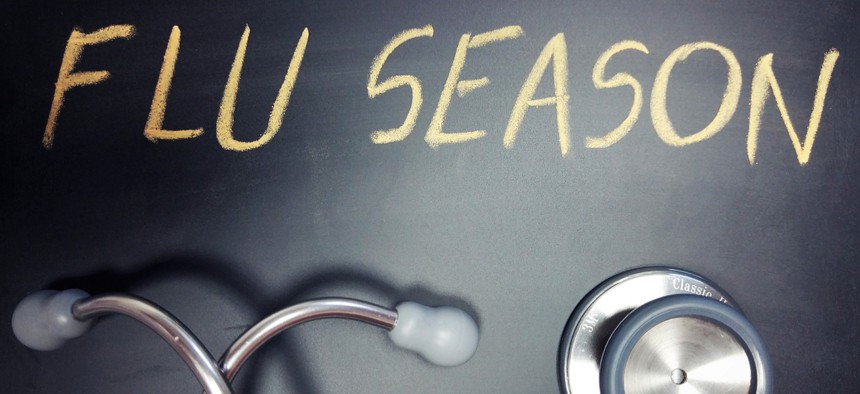Flu Season May Last Longer in Large Urban Areas, Study Says

Flu season unfolds different in cities and rural areas, the study says. shutterstock
But smaller cities can have more intense outbreaks of the flu, researchers found.
Flu season tends to last longer in larger cities where climate conditions like humidity play less of a role due to increased contact between infected and non-infected residents, according to a recent study.
But researchers found that smaller cities are more susceptible to intense epidemics.
According to the report, published this month in the journal Science, flu transmission typically depends on an area’s relative humidity, or the amount of moisture in the air. When air is colder and dryer, the virus lingers longer in the atmosphere, allowing flu-filled drops (mucus, saliva) to more easily travel from one person to another.
“As specific humidity decreases in the winter, influenza virus remains viable outside a host for longer, expanding the spatiotemporal ‘cloud of risk’ generated by an infected host and increasing transmission potential in the population,” says the report, authored by seven researchers from Oregon State University, the University of Cambridge, Penn State University, Princeton and the National Institutes of Health.
But those climatological factors may matter less in densely populated areas where people come into contact more frequently, “such as those that reside, travel or work in close proximity.”
To test that hypothesis, researchers examined six years of weekly flu data from 603 cities and towns across the U.S. They found that flu season started earlier and lasted longer in larger cities, including in places with disparate climates like Miami and New York. In such places, where residents live closer together and use public transportation to commute to and from work, frequent in-person contact lessens the impact of climate factors, including humidity. (That close proximity may also increase herd immunity, the report notes.)
But in large cities, individual cases of the flu tend to be more spread out than in smaller cities. In communities with smaller populations, shorter, more intense epidemics—the type that drain public health resources—are more likely and depend more on weather fluctuations, including cold spells.
“The surges tended to occur in smaller cities with less residential density and lower household incomes,” the report says. “Larger, more densely populated cities had more-diffuse epidemics, presumably because of higher rates of personal contact, which makes influenza transmission less subject to climate variation.”
Researchers noted that large city dwellers are not automatically more likely to contract the flu than their counterparts in smaller communities—but their risk of catching the virus lasts longer.
An unvaccinated child died from the flu in Florida this week, the first pediatric death of the 2018-2019 flu season. Health officials there said the number of flu patients was likely to rise in the coming months. More than 80,000 people died of the flu last year, classified as a "high-severity" season by the Centers for Disease Control and Prevention.
Because predicting the severity of a flu season is an inexact science, the study’s authors suggest that cities prepare by encouraging residents to get vaccinated earlier to blunt impacts and increase immunity.
“Vaccination early in the season could mimic the accumulation of population-level immunity via off-peak transmission,” the report notes. “This illustrates an additional population-level benefit to influenza vaccination under increasingly extreme climate cycles.”
Kate Elizabeth Queram is a Staff Correspondent for Government Executive’s Route Fifty and is based in Washington, D.C.
NEXT STORY: Why is it so hard to get an accurate vote count?





